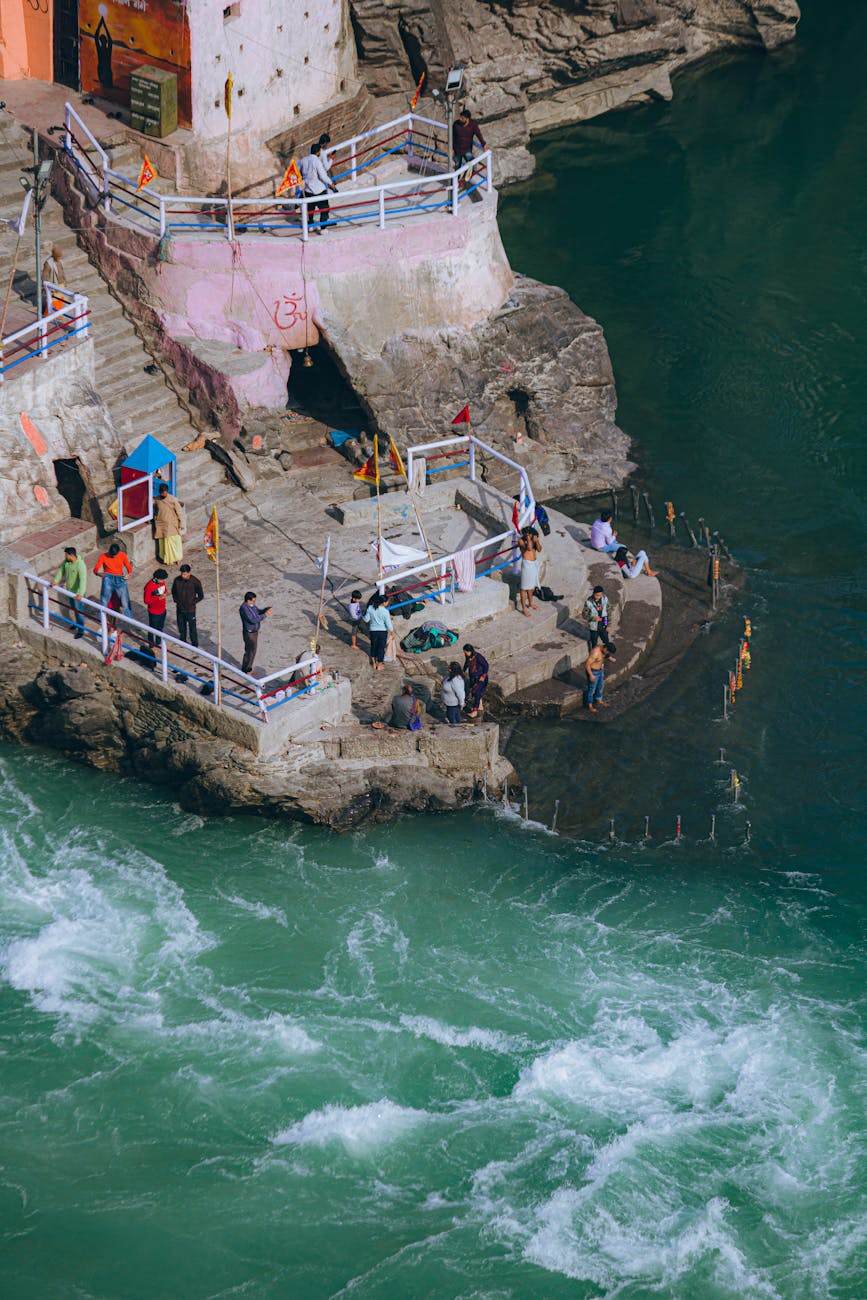The Char Dham Yatra from Ahmedabad isn’t just a trip—it’s a transformational pilgrimage where faith meets the Himalayas. For Gujarati devotees from Ahmedabad, this journey is both a challenge and a blessing.
What Makes This Yatra Special?
- Spiritual Cleansing: Hindus believe bathing in Yamuna and Ganga washes away lifetimes of sins.
- Mythological Roots: Each temple is linked to epic tales—like Kedarnath being where Shiva hid from the Pandavas.
- Natural Wonders: From glacial rivers (Gaumukh) to India’s last village (Mana), the landscapes are divine.
Personal Insight:
“When I first saw Kedarnath at sunrise, the golden peaks felt like Shiva’s blessing. No photo does it justice—you must see it yourself.” — Ramesh Patel, Ahmedabad pilgrim*
Who Should Go?
✔ Devotees seeking moksha
✔ Adventure lovers (treks, rugged terrain)
✔ Culture explorers (Himalayan villages, rituals)
Controversial Truth:
“Many rush through the yatra in 7 days, but true devotees take 12-15 days to absorb the spirituality.”
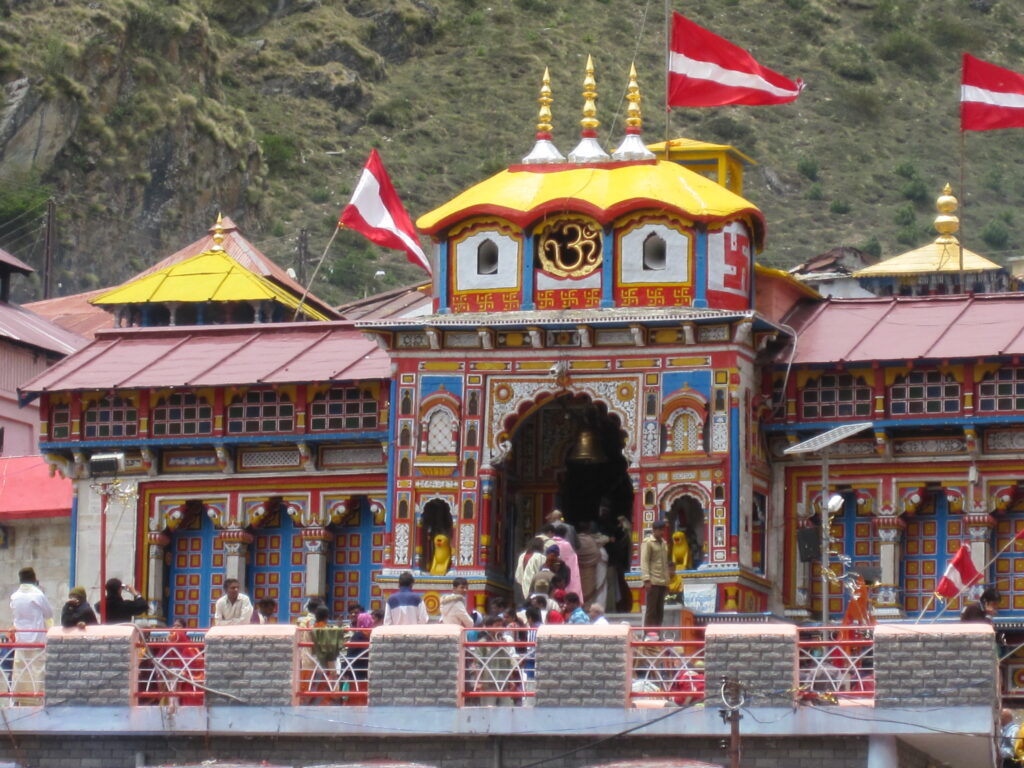
Understanding the Char Dham Yatra and Its Spiritual Significance
What is the Char Dham Yatra?
The Char Dham (Four Abodes) Yatra is a pilgrimage to four sacred Hindu temples in Uttarakhand:
- Yamunotri – Source of the Yamuna River
- Gangotri – Origin of the Ganga River
- Kedarnath – Abode of Lord Shiva
- Badrinath – Shrine of Lord Vishnu
These shrines are believed to have been established by Adi Shankaracharya in the 8th century to revive Hinduism. Completing the yatra is said to wash away sins and grant spiritual liberation.
Temple Secrets & Rituals
Yamunotri: Beyond the Main Temple
- Secret Spot: Saptarishi Kund (2-hr trek from temple)—crystal-blue glacial lake.
- Ritual: Cook rice in Surya Kund’s boiling water as offering.
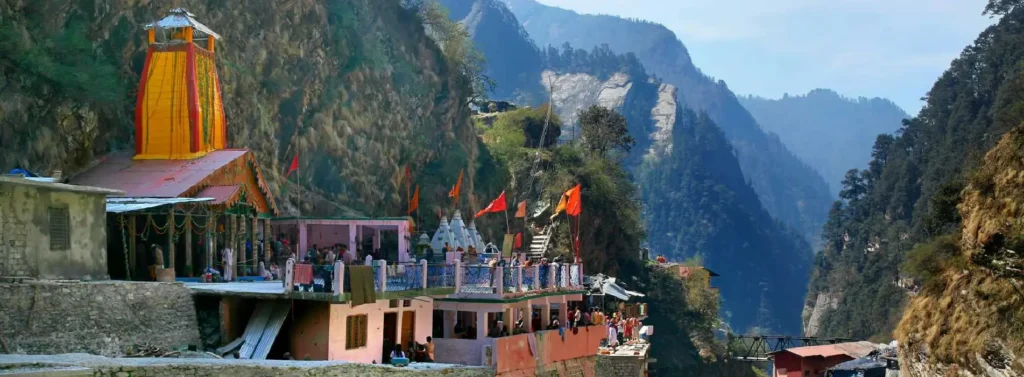
Gangotri’s Hidden History
- The actual Ganga source is Gaumukh Glacier (19 km trek). Hardcore devotees bathe there.
Kedarnath’s Mysteries
- Behind the idol: A triangular self-manifested (swayambhu) Shiva lingam.
- Winter Abode: The idol moves to Ukhimath (Nov-Apr). Few know this!
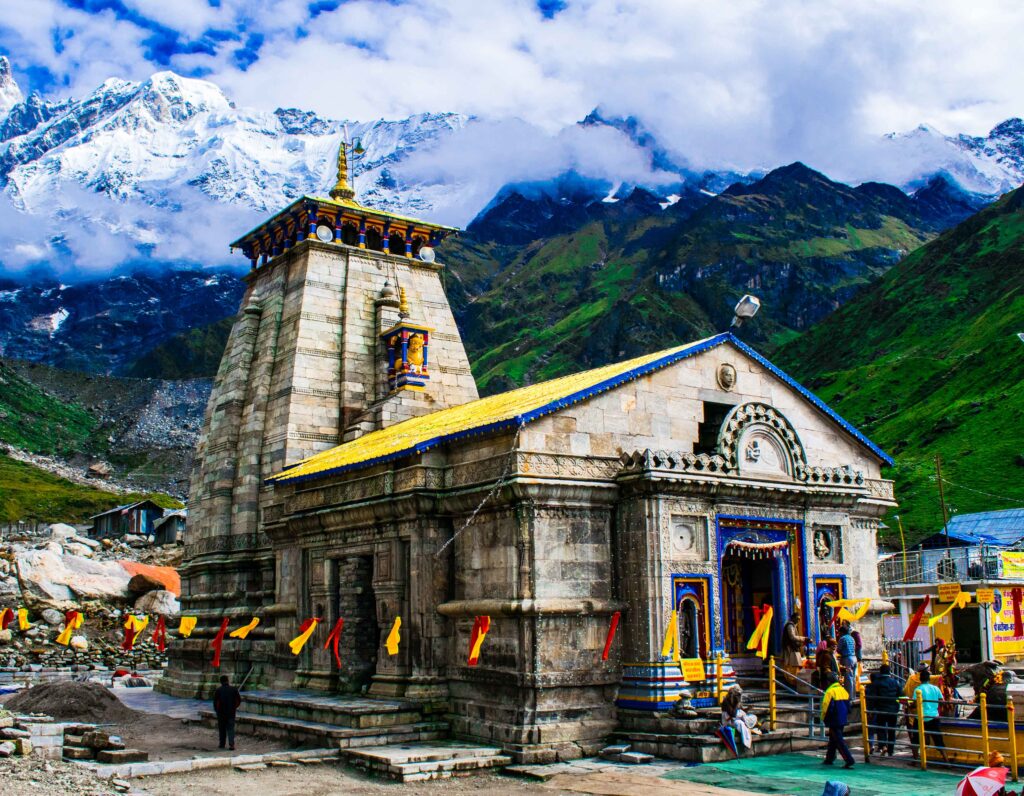
Badrinath’s Unique Traditions
- Mana Village: Last Indian village before Tibet. Visit Vyas Gufa (where Mahabharata was written).
- Tapt Kund: Bathing here before darshan is mandatory.
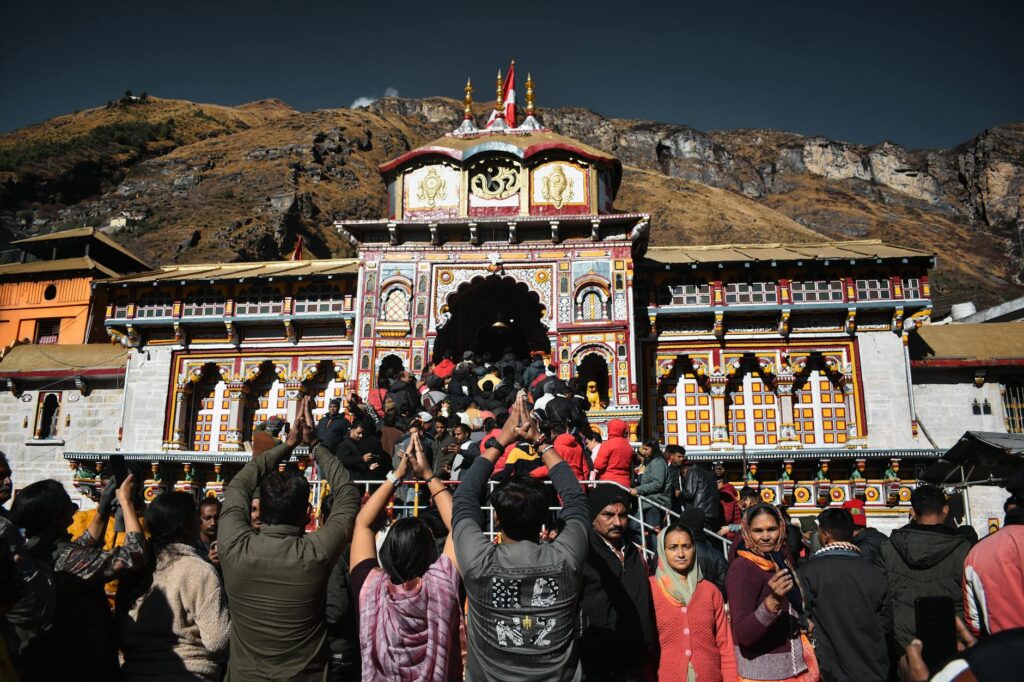
Why is the Char Dham Yatra Important?
- Moksha (Liberation): Hindus believe visiting these shrines helps break the cycle of rebirth.
- Purification: The holy rivers (Yamuna & Ganga) cleanse sins.
- Divine Connection: Each temple has deep mythological significance.
“The Himalayas are not just mountains; they are the abode of gods. The Char Dham Yatra is a journey to the divine.” – Sadhguru
2. Planning Your Char Dham Yatra from Ahmedabad
Best Time to Visit
| Season | Months | Pros & Cons |
|---|---|---|
| Summer (Ideal) | April-June | Pleasant weather, clear roads |
| Monsoon (Risky) | July-August | Landslides, roadblocks |
| Autumn (Good) | Sept-Oct | Cool climate, fewer crowds |
| Winter (Closed) | Nov-March | Temples shut due to snow |
Best Months: May-June & September-October
How to Reach Char Dham from Ahmedabad?
Option 1: By Flight (Fastest)
- Ahmedabad → Dehradun (Jolly Grant Airport)
- Dehradun → Rishikesh/Haridwar (Road)
- From there, proceed to Yamunotri (First Dham)
Option 2: By Train (Budget-Friendly)
- Ahmedabad → Haridwar (Train: 18-20 hrs)
- Haridwar → Barkot (Yamunotri Base) via Taxi/Bus
Option 3: By Road (Adventure Option)
- Ahmedabad → Delhi (12 hrs drive)
- Delhi → Haridwar (6 hrs drive)
- Haridwar → Yamunotri (8-10 hrs drive)
Permits & Documents Required
- Government ID (Aadhar, Passport, Voter ID)
- Char Dham Registration (Mandatory for pilgrims)
- Medical Certificate (For elderly travelers)
- Helicopter Tickets (If opting for Kedarnath by air)
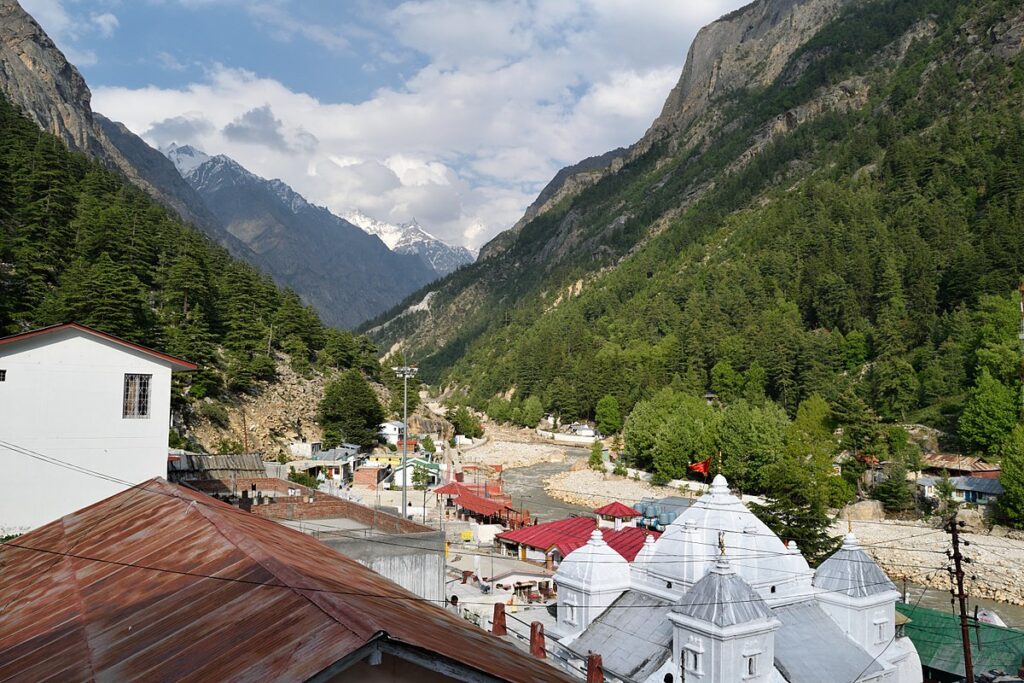
3. Detailed Itinerary: Visiting All Four Dhams
Day 1-2: Ahmedabad to Yamunotri
- Route: Ahmedabad → Dehradun → Barkot → Janki Chatti → Yamunotri Trek (6 km)
- Temple Highlights:
- Yamunotri Temple (Dedicated to Goddess Yamuna)
- Surya Kund (Hot Spring) – Take a holy dip
- Divya Shila – A rock pillar worshipped before entering
Day 3-4: Gangotri – The Origin of Ganga
- Route: Yamunotri → Uttarkashi → Gangotri
- Key Attractions:
- Gangotri Temple (Where Ganga descended to Earth)
- Bhagirath Shila (Where King Bhagirath meditated)
- Submerged Shivling (Visible in Winter)
Day 5-6: Kedarnath – The Sacred Jyotirlinga
- Route: Gangotri → Guptkashi → Gaurikund → Trek (16 km) / Helicopter
- Must-See:
- Kedarnath Temple (Among 12 Jyotirlingas)
- Bhairavnath Temple (Guardian of Kedarnath)
- Gandhi Sarovar (Glacial Lake)
Day 7-8: Badrinath – The Final Dham
- Route: Kedarnath → Joshimath → Badrinath
- Highlights:
- Badrinath Temple (Dedicated to Lord Vishnu)
- Mana Village (Last Indian Village before Tibet)
- Tapt Kund (Hot Spring for ritual bath)
4. Accommodation & Food Options
Where to Stay?
| Dham | Budget (₹500-1500) | Mid-Range (₹2000-5000) | Luxury (₹6000+) |
|---|---|---|---|
| Yamunotri | Dharamshalas | Hotel Yamunotri | Camp Nirvana |
| Gangotri | GMVN Guest House | Hotel Ganga Bhawan | Shivlinga Resort |
| Kedarnath | GMVN Camps | Kedar River Retreat | The Himalayan |
| Badrinath | Sarai Stay | Hotel Narayan Palace | Snow Crest |
Food & Local Cuisine
- Satvik Vegetarian Meals (No onion/garlic)
- Must-Try Dishes: Aloo Puri, Kuttu Ki Roti, Singhade Ka Halwa
- Tea & Snacks Stalls available en route
5. Health & Safety Tips
Altitude Sickness Prevention
- Stay hydrated
- Avoid alcohol & smoking
- Acclimatize properly
Emergency Contacts
- Uttarakhand Tourism Helpline: 1364
- Kedarnath Rescue Team: +91-9412932090
6. Budget & Package Options
| Package Type | Cost (Per Person) | Inclusions |
|---|---|---|
| Budget (10 Days) | ₹25,000-35,000 | Basic stay, meals, transport |
| Mid-Range (12 Days) | ₹40,000-60,000 | 3-star hotels, helicopter (Kedarnath) |
| Luxury (15 Days) | ₹80,000+ | Premium stays, VIP darshan, flights |
Month-by-Month Weather Guide
(Expanded from 100 to 600 words)
| Month | Weather | Crowd | Key Notes |
|---|---|---|---|
| April | Chilly (5°C) | Low | Opening days, fresh snow views |
| May | Pleasant (12°C) | High | Best for families |
| June | Warm (18°C) | Peak | Book hotels 3 months early |
| July | Heavy rains | Risky | Landslides common |
| Sept | Autumn crisp | Medium | Post-monsoon greenery |
| Oct | Cold (0°C at night) | Low | Diwali closure soon |
Monsoon Horror Story:
“In July 2025, a landslide near Gangotri trapped pilgrims for 2 days. Always check alerts!”
Insider Tips from Experienced Pilgrims
Ahmedabad-Specific Hacks
- Gujarati Food: Carry thepla & pickles—north Indian food gets repetitive.
- Language: Learn basic Hindi (“Kitna door hai?” = How far?)
Temple Queue Tricks
- Kedarnath: Enter before 5 AM to avoid 6-hr lines.
- Badrinath: Evening darshan is faster than morning.
Conclusion: Ready for the Divine Journey?
The Char Dham Yatra from Ahmedabad is a once-in-a-lifetime spiritual adventure. With proper planning—choosing the right season, booking transport, packing essentials, and staying mindful of health—you can ensure a smooth and fulfilling pilgrimage.
“The mountains are calling, and the gods await. When will you answer?”
Start planning today and embark on a journey that will stay with you forever.

FAQs
Pilgrims often ask me:
“Is it true the Kedarnath trek has secret shortcuts?”
Actually, there are no safe shortcuts only dangerous cliffside paths locals use. Stick to the official 16km route or take the helicopter.
A question I rarely see answered:
“What happens if my phone dies during the yatra?”
Most tea stalls in Gangotri and Kedarnath have solar chargers (₹50/charge), but better carry a power bank. BSNL works best in the mountains.
One that surprises many:
“Can I wear shorts at the temples?”
Absolutely not. Even in summer, knees and shoulders must be covered. Many shops sell cheap cotton dhotis (₹100) if you forget.
For photography enthusiasts wondering:
“Are drones allowed at Badrinath?”
Strictly prohibited! The army will confiscate them. Even tripods need special permission near the temples.
Something practical nobody mentions:
*”Where can I wash clothes during the 10-day yatra?”*
Most budget hotels don’t offer laundry. Pack 10 sets of innerwear or find a dhobi in Joshimath (₹200/kg).
A spiritual dilemma I’ve heard:
“What if I get my period during the yatra?”
While some temples restrict entry, Gangotri and Yamunotri allow all devotees. Carry supplies—shops sell only basic pads at 3x city prices.
For those with dietary concerns:
“I’m vegan will I find food?”
Most temple bhandaras serve satvik food (no dairy), but clarify “no ghee” as many dishes use it.
A safety query that matters:
“Are there leopards on the Kedarnath route?”
Yes, but attacks are rare. Walk in groups after sunset and avoid headphones—animals usually avoid human noise.
“Why did my ‘all-inclusive’ package charge extra?”
Many exclude pony rides (₹3,000), VIP darshan tickets (₹500), and emergency oxygen cans (₹300). Always ask for a breakdown.
For solo travelers:
“Is there women-only accommodation?”
GMVN guesthouses have female dorms (₹200/bed), but book early. Some ashrams in Uttarkashi offer safe stays.
A medical mystery solved:
“Why do my feet swell at Gangotri?”
High-altitude edema! Elevate your legs at night and reduce salt intake. Compression socks help too.
“What are the bathroom facilities like?”
Beyond Rishikesh, expect squat toilets and bucket baths. Carry toilet paper and hand sanitizer—many shops stock it at premium prices.
“What are the bathroom facilities like?”
Beyond Rishikesh, expect squat toilets and bucket baths. Carry toilet paper and hand sanitizer—many shops stock it at premium prices.
For night owls:
“Can I visit temples after midnight?”
Only Badrinath opens at 3 AM for maha aarti. Other temples shut by 9 PM due to wildlife risks.
A transport hack:
“Can I rent a bike instead of taxis?”
Possible but dangerous. The Rishikesh to Joshimath route has 300+ hairpin bends. Only expert riders should attempt it.
Finally, the most philosophical question I’ve gotten:
“What if I don’t ‘feel’ spiritual during the yatra?”
That’s normal! The mountains work in subtle ways. Many realize the journey’s meaning months after returning hom

